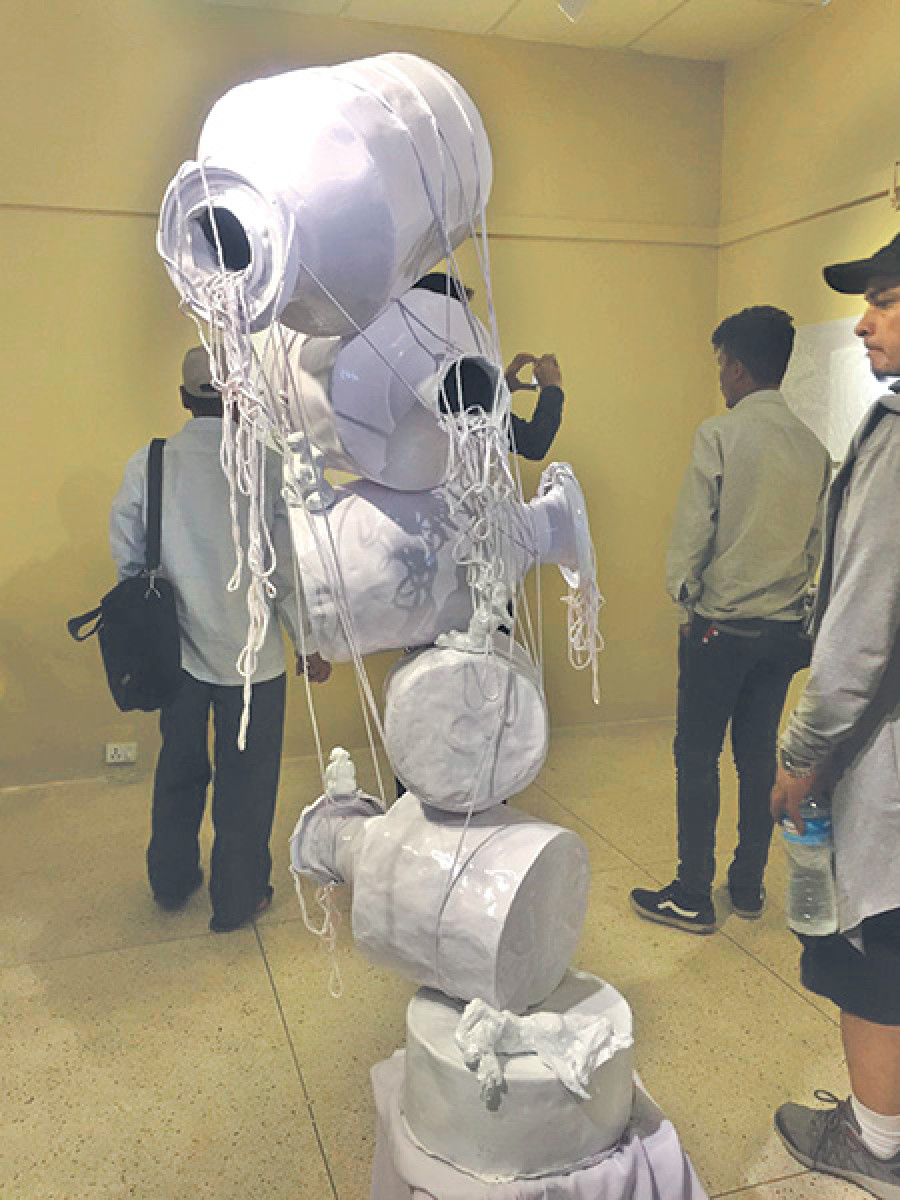Entertainment
‘White is the most ambiguous colour’
Artist Jyoti Prakash’s seventh solo exhibition—Aama—is currently ongoing at Nepal Art Council. The first of its kind exhibit features all-white paintings on canvas and two art installations.
Samikshya Bhattarai
Artist Jyoti Prakash’s seventh solo exhibition—Aama—is currently ongoing at Nepal Art Council. The first of its kind exhibit features all-white paintings on canvas and two art installations.
White on White concept in art was first introduced by the Russian artist Kazimir Malevich. His painting White on White is one of the more well-known examples of the Russian Suprematism movement.
Borrowing the concept from Malevich, Prakash in his works has etched the stories of mothers and motherland.
“The colour white has an ambiguity of its own as it is both the symbol of colour and the lack of it. In our culture too, white is as much a sign of purity and gentleness as that of sorrow and despair. So I have used this colour, which comes with opposite meanings, to tell the stories of Nepali mothers as well as Nepal as the motherland,” said artist Prakash, adding, “This is my attempt to portray the pain, suffering and distress of mothers and of the motherland on losing her children to foreign employment.”
The artworks on display make use of objects such as buttons, threads, metal pots, cooking utensils, and other objects. Speaking about the symbolism, artist Prakash said, “I used threads and buttons to highlight that it is high time that the country come together and unite. Thread and button always bind things together, and we need something just like that—a common goal—to bind us all together. “
He added, “The gagris and cooking pots installed as art in the exhibition actually come right out of my mother and other women’s kitchens from my village. I have used them to symbolise how women of rural Nepal are still limited to their kitchens.”
The exhibition will run until Friday.




 11.12°C Kathmandu
11.12°C Kathmandu










